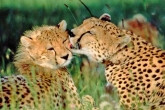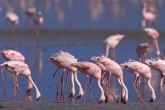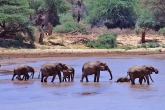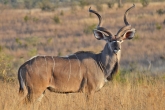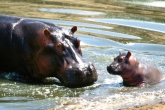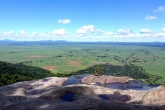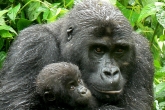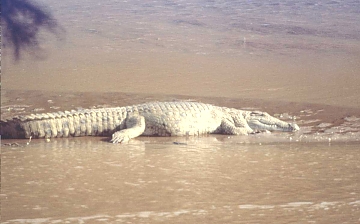Katavi National Park Tanzania 588
Katavi National Park is vast at about 5000 square and is teeming with wildlife, which is unmatched anywhere else in Africa. Katavi National Park is the Tanzania's third largest national park, it lies in the remote southwest of the country, within a truncated arm of the Rift Valley that terminates in the shallow, brooding expanse of Lake Rukwa.
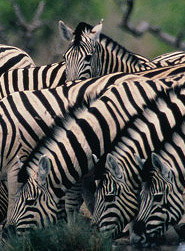
Zebras
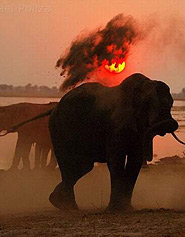
Elephants
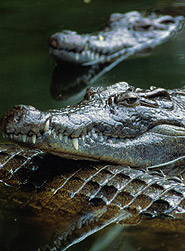
Crocodiles
It is during the dry season, when the floodwaters retreat, that Katavi truly comes on its own. The Katuma, reduced to a shallow, muddy trickle, forms the only source of drinking water for miles around, and the flanking floodplains support game concentrations that defy belief. An estimated 4,000 elephants might converge on the area, together with several herds of 1,000-plus buffalo, while an abundance of giraffe, zebra, impala and reedbuck provide easy pickings for the numerous lion prides and spotted hyena clans whose territories converge on the floodplains.
Attractions
Katavi?s hippos provide most singular wildlife spectacle. Towards the end of the dry season, up to 200 individuals might flop together in any riverine pool of sufficient depth. And as more hippos gather in one place, so does male rivalry heat up ? bloody territorial fights are an everyday occurrence, with the vanquished male forced to lurk hapless on the open plains until it gathers sufficient confidence to mount another challenge. The springs and pools get packed sardine-like with hippos, crocodiles and elephants.
There are two or three major pools where the hippos are packed in very tightly in a very small area. The main pool at the ranger post sometimes contains as many as 3200 hippos, whilst a similar number will be in a nearby pool. Sharing these shrinking pools of water during the dry season are some good sized crocodiles and maribou storks, which pull the wriggling catfish out of the mud too.
Access
The park can be accessed through Charter flights from Dar or Arusha. By road a tough but spectacular day's drive from Mbeya (550 km/340 miles), or in the dry season only from Kigoma (390 km/240 miles).
It is possible to reach Mpanda by rail from Dar via Tabora, then to catch public transport to Sitalike, where game drives can be arranged. If travelling overland, allow plenty of time to get there and back.
Tourist?s activities
- Nature walks, game driving and camping safaris.
- Near Lake Katavi, visit the tamarind tree inhabited by the spirit of the legendary hunter Katabi (for whom the park is named) - offerings are still left here by locals seeking the spirit?s blessing.
Accommodation
The park has limited Facilities, with just one camp in the park. One seasonal luxury tented camp overlooking Lake Chada, a rest house at Sitalike and campsites inside the park. Basic but clean hotels at Mpanda.
Safaris
14 Days Tanzania Classic Safari
12 Days Kenya Tanzania Extended Safari
3 Days Mountain Gorilla Safari
8 Days Uganda and Rwanda Gorilla Tracking
10 Days Kenya, Sambura, Mt. Kenya, Lake Nakuru, Masaai Mara and Amboseli
6 Days Safari to Amboseli, Lake nakury and Maasai Mara Reserves
12 Days Mountain Gorrilas Trakings
7 Days Lake Manyara, Ngorongoro and Serengeti
4 Days Masaai Mara and Lake Nakuru Safari
7 Days Samburu, Aberdares, Lake Nakuru and Maasai Mara

 German
German Spanish
Spanish






